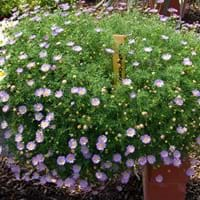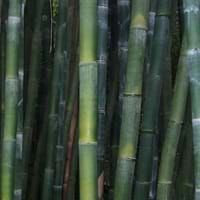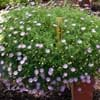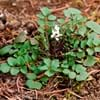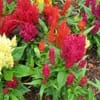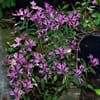Life Span
Annual
Perennial
Type
Tender Perennial
Grass
Origin
Hybrid origin, Australia, New Zealand
China
Types
Not Available
Greenstripe Vivax, Moso, Weavers Bamboo, Oldhamii
Number of Varieties
Not Available
Habitat
Dry areas, Islands, Semi arid regions, Tropical regions
Subtropical climates, Wet Woods
USDA Hardiness Zone
10-12
8-11
AHS Heat Zone
12-1
12 - 8
Sunset Zone
H1, 14, 15, 16, 17, 18, 19, 20, 21, 22, 23, 24
H1, H2, 8, 9, 14, 15, 16, 17, 18, 19, 20, 21, 22, 23, 24
Habit
Cushion/Mound-forming
Upright/Erect
Flower Color
White
Not Available
Flower Color Modifier
Bicolor
Bicolor
Fruit Color
Not Available
Not Available
Leaf Color in Spring
Green
Dark Green
Leaf Color in Summer
Green
Light Green
Leaf Color in Fall
Green
Dark Green
Leaf Color in Winter
Light Green
Dark Green
Leaf Shape
Club - shaped
Acicular
Plant Season
Spring, Summer, Fall, Winter
Spring, Summer, Fall, Winter
Sunlight
Full Sun, Partial Sun
Full Sun, Partial Sun
Type of Soil
Loam, Sand
Clay, Loam, Sand
The pH of Soil
Acidic
Acidic, Neutral, Alkaline
Soil Drainage
Well drained
Average
Bloom Time
Indeterminate
Not Available
Tolerances
Drought
Drought
Where to Plant?
Container, Ground, Pot
Container, Ground
How to Plant?
Seedlings
Grafting, Seedlings, Stem Planting, Transplanting
Plant Maintenance
Medium
Medium
Watering Requirements
Average Water Needs
Needs watering once a week, Use Mulches to help prevent water loss during hot and windy weather, Water Deeply
In Summer
Lots of watering
Lots of watering
In Spring
Moderate
Moderate
In Winter
Average Water
Average Water
Soil pH
Acidic
Acidic, Neutral, Alkaline
Soil Type
Loam, Sand
Clay, Loam, Sand
Soil Drainage Capacity
Well drained
Average
Sun Exposure
Full Sun, Partial Sun
Full Sun, Partial Sun
Pruning
Remove damaged leaves, Remove dead branches, Remove dead leaves
Do not prune during shooting season, Prune in late summer or fall, Remove damaged leaves
Fertilizers
All-Purpose Liquid Fertilizer
All-Purpose Liquid Fertilizer
Pests and Diseases
Slugs, Snails
Black sooty mold, Mealybugs, Mosaic viruses, Powdery mildew, pythogens, Stem rot
Plant Tolerance
Drought
Drought
Flower Petal Number
Single
Single
Foliage Texture
Fine
Coarse
Foliage Sheen
Glossy
Matte
Attracts
Not Available
Deers, Rabbits, Rats, Squirrels
Allergy
Not Available
allergic conjunctivitis, Asthma, Inflammation, Throat itching
Aesthetic Uses
Beautification, Hanging Basket, Showy Purposes
Showy Purposes
Beauty Benefits
Not Available
Not Available
Environmental Uses
Air purification
Agroforestry, Air purification, No fertilizer, pesticides, or herbicides needed
Medicinal Uses
No Medicinal Use
Clears heat, Cold, fidgeting, Treating fever, Urinary tract problems
Part of Plant Used
Flowers, Leaves
Leaves, Stem
Other Uses
Used as Ornamental plant
Application in Handicrafts, Showy Purposes, Used As Food, Used in Furniture, Used in paper industry
Used As Indoor Plant
No
No
Used As Outdoor Plant
Yes
Yes
Garden Design
Bedding Plant, Container, Edging, Hanging Basket, Mixed Border, Rock Garden / Wall
Feature Plant, Screening / Wind Break, Tropical
Botanical Name
BRACHYSCOME iberidifolia
BAMBUSA oldhamii
Common Name
Brachycome iberidifolia, Swan River Daisy
Clumping Bamboo, Giant Timber Bamboo, Oldham's Bamboo
In Hindi
swan river daisy
Bānsa
In German
Swan River Gänseblümchen
Bambus
In French
Swan River daisy
Bambou
In Spanish
Río Swan margarita
Bambú
In Greek
Swan River μαργαρίτα
μπαμπού
In Portuguese
daisy Swan River
bambu
In Polish
Swan River stokrotka
Bambus
In Latin
Swan flumen primula
Bamboo
Phylum
Tracheophyta
Magnoliophyta
Class
Magnoliopsida
Liliopsida
Family
Asteraceae
Poaceae
Genus
Brachyscome
Bambusa
Clade
Angiosperms, Asterids, Eudicots
Not Available
Subfamily
Asteroideae
Not Available
Number of Species
Not Available
Season and Care of Swan River Daisy and Giant Timber Bamboo
Season and care of Swan River Daisy and Giant Timber Bamboo is important to know. While considering everything about Swan River Daisy and Giant Timber Bamboo Care, growing season is an essential factor. Swan River Daisy season is Spring, Summer, Fall and Winter and Giant Timber Bamboo season is Spring, Summer, Fall and Winter. The type of soil for Swan River Daisy is Loam, Sand and for Giant Timber Bamboo is Clay, Loam, Sand while the PH of soil for Swan River Daisy is Acidic and for Giant Timber Bamboo is Acidic, Neutral, Alkaline.
Swan River Daisy and Giant Timber Bamboo Physical Information
Swan River Daisy and Giant Timber Bamboo physical information is very important for comparison. Swan River Daisy height is 20.30 cm and width 30.50 cm whereas Giant Timber Bamboo height is 1,000.00 cm and width 10.00 cm. The color specification of Swan River Daisy and Giant Timber Bamboo are as follows:
Swan River Daisy flower color: White
Swan River Daisy leaf color: Green
Giant Timber Bamboo flower color: Not Available
- Giant Timber Bamboo leaf color: Dark Green
Care of Swan River Daisy and Giant Timber Bamboo
Care of Swan River Daisy and Giant Timber Bamboo include pruning, fertilizers, watering etc. Swan River Daisy pruning is done Remove damaged leaves, Remove dead branches and Remove dead leaves and Giant Timber Bamboo pruning is done Do not prune during shooting season, Prune in late summer or fall and Remove damaged leaves. In summer Swan River Daisy needs Lots of watering and in winter, it needs Average Water. Whereas, in summer Giant Timber Bamboo needs Lots of watering and in winter, it needs Average Water.
